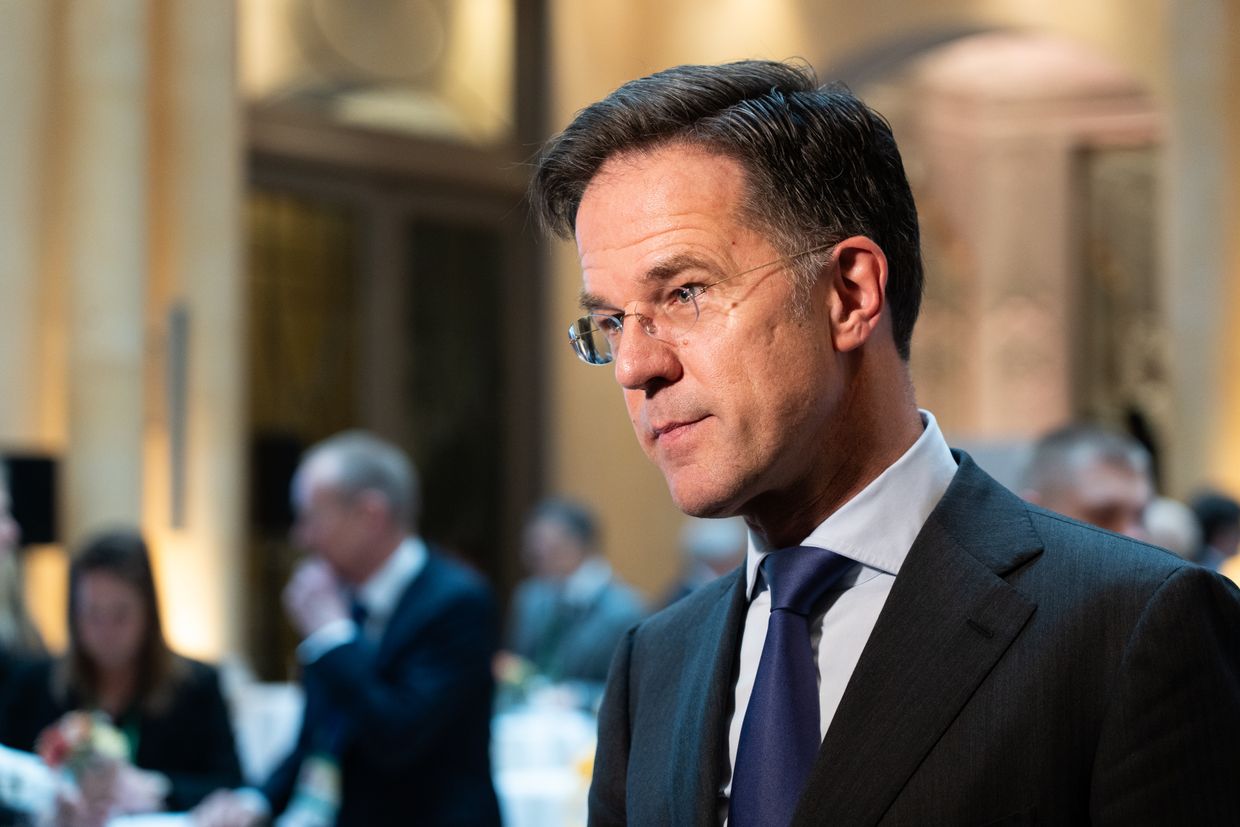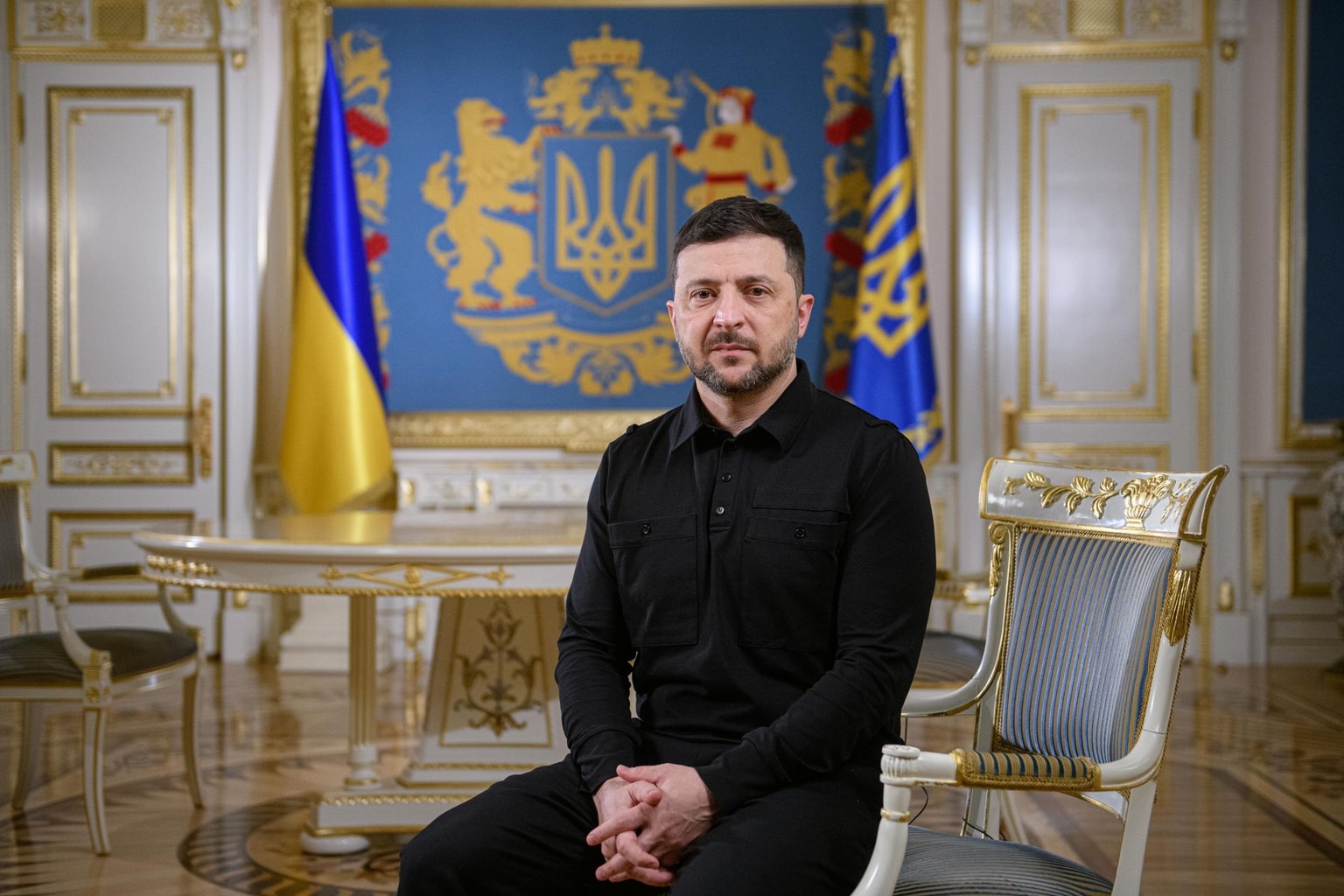
Ukraine braces for winter freeze amid potential Russian strikes targeting nuclear power
After destroying much of Ukraine’s thermoelectric power generation, Russian air strikes increasingly aim to disconnect the country’s nuclear plants from the electricity grid
A general view of the Zaporizhzhia nuclear power plant in southern Ukraine on March 29, 2023. (Andrey Borodulin / AFP via Getty Images)
Ukraine is set to face its toughest winter since the start of the full-scale invasion as Russia eyes cutting off its nuclear power after already bombing out capacity from half of its electricity generation sector in large-scale air strikes.
For now, Russia is not directly striking the plants with missiles and kamikaze drones. But Moscow has increasingly targeted nearby infrastructure, such as substations containing crucial equipment like transformers and power lines connecting nuclear plants to the grid.
“We're in a world where (Ukraine) has a deficit of functioning infrastructure. This is going to be the hardest winter yet,” International Energy Agency (IEA) Chief Economist Tim Gould told the Kyiv Independent.
If Russian attacks successfully disconnect all the power plants from the grid, then Ukraine’s only stable power source is gone, said Warsaw-based energy analyst Wojciech Jakobik.
“(Nuclear power) is a baseload capacity, which is irreplaceable by renewables, other sources, and especially not by energy imports,” he told the Kyiv Independent.
“With a smaller nuclear capacity in place, Ukraine will have less flexibility and less ability to stabilize (energy) generation.”
Ukraine has lost 9 gigawatts of power generation, including eight thermal plants and five hydro plants, due to Russian strikes this year. While companies scramble to repair their damaged assets, Russia is gearing up to attack Ukraine’s nuclear infrastructure, the Energy Ministry's press office told the Kyiv Independent, which would freeze out Ukrainians and cause a humanitarian crisis if the country can’t swiftly repair and protect its infrastructure.

After the occupation of the Zaporizhzhia nuclear power plant in 2022, Ukraine relies heavily on three nuclear plants remaining under government control. They are the lifeline of the country, providing 60% of its power. The last mass attack on Aug. 26 forced Ukraine to disconnect three units at the Rivne and South Ukraine plants, causing weeks of power outages.
The country’s state-owned nuclear company, Energoatom, told the Kyiv Independent that all its power units are ready to operate at “maximum capacity” during the heating season, and the company connected a refurbished one-gigawatt nuclear power unit to the grid on Oct. 1. However, it has only recently announced plans to build additional fortifications to protect power plants from attacks.
Without stable power, Ukrainians will face another round of blackouts similar to the ones in the summer which could last as long as eight hours a day.
Without stable power, Ukrainians will face another round of blackouts similar to the ones in the summer which could last as long as eight hours a day, according to Kyiv-based think tank DiXi Group. Brutally cold winter temperatures during power outages will freeze pipes, cutting off Ukrainians’ access to water and heating, and may lead to another wave of refugees, the UN’s refugee agency (UNHCR) told the Kyiv Independent.
At the same time, attacks on nuclear infrastructure massively heighten the risks of accidents, the Energy Ministry's press office said. While Jakobik believes a Chernobyl-like scenario is unlikely as reactors are well protected, damage to substations could prevent backup supplies of electricity that ensure the safety of reactors, according to the International Energy Agency (IEA).
The EU and the U.S. Embassy in Kyiv both told the Kyiv Independent that they are pitching in to bolster the energy sector in time for winter with financial support, backup equipment, and humanitarian aid. But with Russia relentlessly churning out and firing its missiles and drones, the only tangible tool for energy security is stronger air defense, the Energy Ministry's press office said.
Running out of time and options
During the first years of the full-scale invasion, Ukraine relied on different facilities within its massive energy sector to survive the initial attacks on energy infrastructure and even managed to export electricity to the EU. But that changed this year after mass attacks beginning in March wiped out 50% of its energy assets.
Now, Ukraine has run out of options and switched from exporting to importing 2 gigawatts of electricity from its European neighbors.
Winter power outages appear inevitable. The United Nations Human Rights Monitoring Mission (UNHRMM) expects blackouts to last between 4-18 hours a day, depending on attacks and the weather, causing living conditions to crumble for millions of citizens.
“The deficit of electricity supply could be up to 6 gigawatts. That's the equivalent of peak demand in Denmark,” Gould said.
With nuclear power as the remaining foundation for Ukraine’s energy stability, it is the prime target for Russian strikes, the Energy Ministry's press office said. Ukraine’s government seeks to decentralize the power grid as quickly as possible, but this is unlikely to happen by the winter and private energy companies are desperately restoring their assets to strengthen the grid.

Ukraine hopes to recover 3 gigawatts by the end of the year, said Olena Lapenko, general manager in the Field of Security and Resilience at DiXi Group. But this depends on critical funding, which state electricity grid operator Ukrenergo puts at $1.5 billion for rapid repairs this season. So far, Ukraine has received nearly 700 million euros ($766 million) from its energy support fund in cooperation with the European Commission, and winter is fast approaching.
Part of the fund covers much-needed equipment, such as autotransformers, to patch up facilities damaged by Russian air strikes as fast as possible. Simple repairs around nuclear plants, like power lines, can be fixed within 24 hours, said Jakobik. But specialized equipment depends on deliveries from Western allies, which can take months unless there are readily available stockpiles, he said.
“The tough part is, you replace the old infrastructure with new parts and Russia attacks it once again,” he added.
DTEK, Ukraine’s largest private energy company owned by its richest man Rinat Akhmetov, has lost 90% of its thermal plants capacity to Russian attacks. By winter, the company hopes to restore 60-65% of its thermal power that was damaged in spring. But even this would not be enough to replace nuclear power if all the plants are disconnected, said Oleksiy Povolotskiy, DTEK’s head of Recovery Office.
Another issue, said Povolotskiy, is that the war has bitten a chunk out of Ukraine’s manual workforce while the scale of the damage is massive. DTEK is bringing in workers from other enterprises, like miners, to help clear debris. The company has asked European states to send engineers and machinery for more complex repairs.
The costs of Russian attacks are piling up for Ukraine. DTEK has already funneled $80 million into repairs from its own budget. Instead of relying on equipment that softens the fallout of attacks and power outages, Povolotskiy believes the most efficient solution is for Western allies to provide Ukraine with additional air-defense systems.
“Partners should understand that it is much cheaper and much more efficient to protect (energy facilities) than to repair,” he said.
The U.S. embassy in Ukraine told Kyiv Independent that the Defense Department will provide an additional Patriot battery and missiles but did not specify if this was directly for the protection of energy facilities. For now, this is the only confirmed delivery of an additional air defense battery, although Washington pledged a $2.6 billion aid package on Sept. 26 that includes munitions and support for air defense systems.
Ill prepared and ultra exposed
With no other extra air-defense systems currently in the pipeline, Ukraine’s government is building protective constructions for substations against falling debris and drones. However, not enough constructions have been built in time for winter and contractors have allegedly not been fully paid.
“More concrete constructions must be built as soon as possible,” Povolotskiy said.
Yuliia Kyian, an official at the Energy Ministry, told the Kyiv Independent during a discussion in Kyiv on Oct. 2, that the constructions are expensive and take time to build. They also cannot withstand ballistic missile strikes, she added.
Energoatom has faced criticism. In September and October, the company signed contracts to construct a $12.3 million shield around the Rivne Nuclear Power Plant and a $14.4 million worth of protection around the South Ukraine plant in Mykolaiv Oblast. Ukrainian anti-corruption watchdog Nashi Groshi reported that the contracts were concluded only after President Volodymyr Zelensky told the UN Security Council that Russia was preparing an attack on the three operating nuclear plants.
“It is difficult to assess why this was not done earlier,” said DiXi Group’s Lapenko.
“Probably no one could imagine that the Russians would aim directly at the nuclear power sites as this is a serious threat to nuclear safety. But we can’t exclude such a scenario.”

A nuclear disaster would threaten the whole of Europe, the Energy Ministry's press office said, adding that the global community must unite to prevent a catastrophe. Kyiv has reached out to the UN’s nuclear agency (IAEA) to place more observation missions around its power plants, but an agreement has not yet been reached.
International observers will ensure that safety standards are enforced at the plants and combat disinformation, as Moscow frequently denies Ukraine’s accusations of endangering nuclear safety, Jakobik said. Nevertheless, Russia could pummel nuclear facilities to the point that it is dangerous for people to remain and force evacuations.
“Russia is not a responsible stakeholder in the nuclear sector,” he said.
“It's using energy terrorism against Ukraine. You cannot be sure about what Russia is doing,” the energy analyst added.
Note from the author:
Hi, it's Dominic Culverwell. Thank you for reading the article and I hope it didn't leave you feeling too despondent. While we are all preparing for a difficult winter, we know Ukraine can make it through and adapt to a difficult future ahead. If you can, please consider supporting us to help us keep telling important stories from Ukraine.













